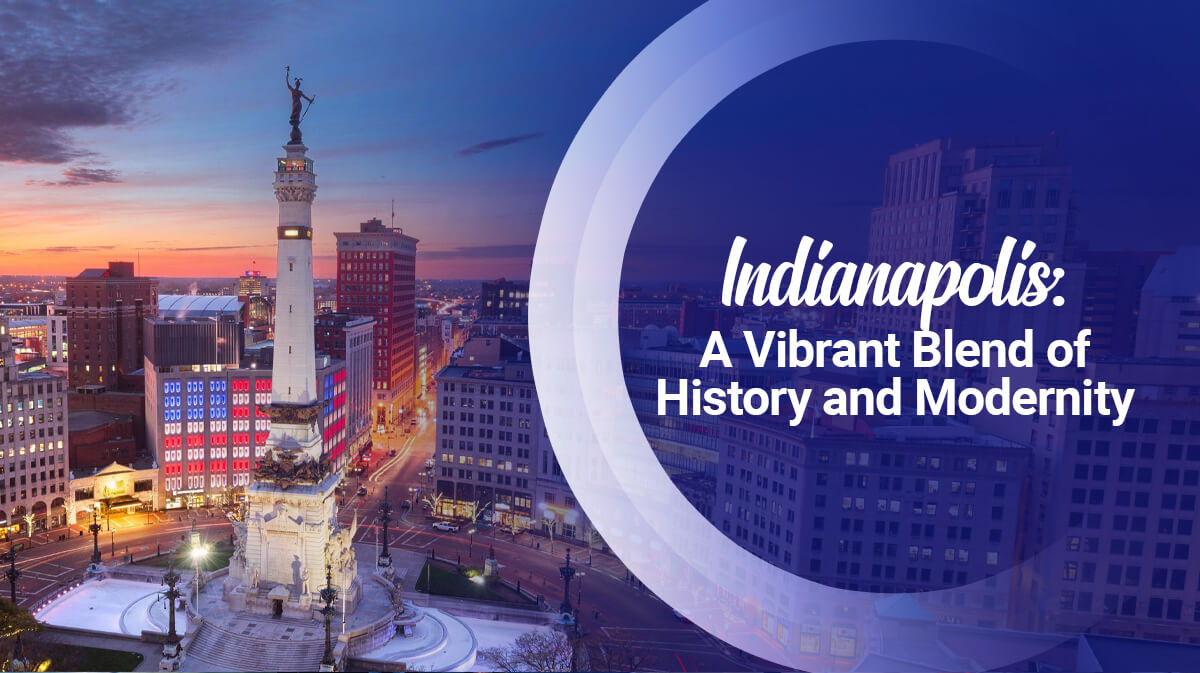
History and Culture of Indianapolis: From Early Days to Today
Famous for hosting the iconic Indianapolis 500 racing event, Indianapolis is an interesting city with a rich history and culture.
Founded almost 200 years ago, Indianapolis is one of the most significant cities in the Midwest as a major cultural and economic hub. It served well as an important transportation point for people traveling to the Midwest from cities on the East Coast.
Below, we’ll look at the history and culture of Indianapolis in more detail, from its early founding period to the city’s bustling skyline and busy atmosphere today. We’ll also look at the events and characteristics that make Indianapolis such a unique, interesting and rewarding city.
Like many Midwest cities, Indianapolis has a history that dates back to the early 19th century. In 1816, the state of Indiana was established, with the New Purchase setting aside land for a state capital.
The name Indianapolis was chosen in 1821, and construction began on a major settlement for the new state. Indianapolis grew over the next few decades, with a National Road built into the town in 1827 and a national railroad operational in the city from 1847 onwards.
In fact, Indianapolis was home to the first union station (a railroad station that’s used by more than one railway company). It is known as the Indianapolis Union Station, which was built in 1853.
Indianapolis served as an important location for the Union during the Civil War, with soldiers based in the city throughout the war. The city served as an important logistics location during the war error, thanks to its central location between other major U.S. cities.
After the Civil War, Indianapolis grew at a rapid pace. The city’s population doubled from 1860 to 1870, increasing to 100,000 by 1890. In the earlier decades of the 20th century, the city became a major automotive manufacturing hub, serving as a rival for industrial center Detroit.
The growth of Indianapolis and its surrounding area continued throughout the 20th century, with a growing number of people moving to the city from elsewhere in the country. Today, the metro area has a population of more than two million, making it one of the country’s largest cities.
Long known as the “Crossroads of America” due to its central location less than one day’s drive from most major cities, Indianapolis has played upon its transportation image to turn itself into a tourism destination.
Today, the city is most famous for hosting the Indianapolis 500 (or Indy 500, as it’s better known). It is a one-day racing event that covers a distance of 500 miles on the famous Indianapolis Motor Speedway.
Known as the “Greatest Spectacle in Racing,” the event is one of the most well-known and prestigious car racing events in the world of motorsports, attracting hundreds of thousands of spectators from the local area and around the country.
Beyond its fame as a motorsport destination, Indianapolis is also famous for its culture. The city is home to the world’s largest children’s museum, an acclaimed zoo and a variety of cultural and historical sites unique to the area.
From its bustling economy to its iconic motorsports heritage, Indianapolis has a lot to offer. As a weekend destination or as a place to live, this state capital offers a unique experience unlike any other city in the Midwest.
